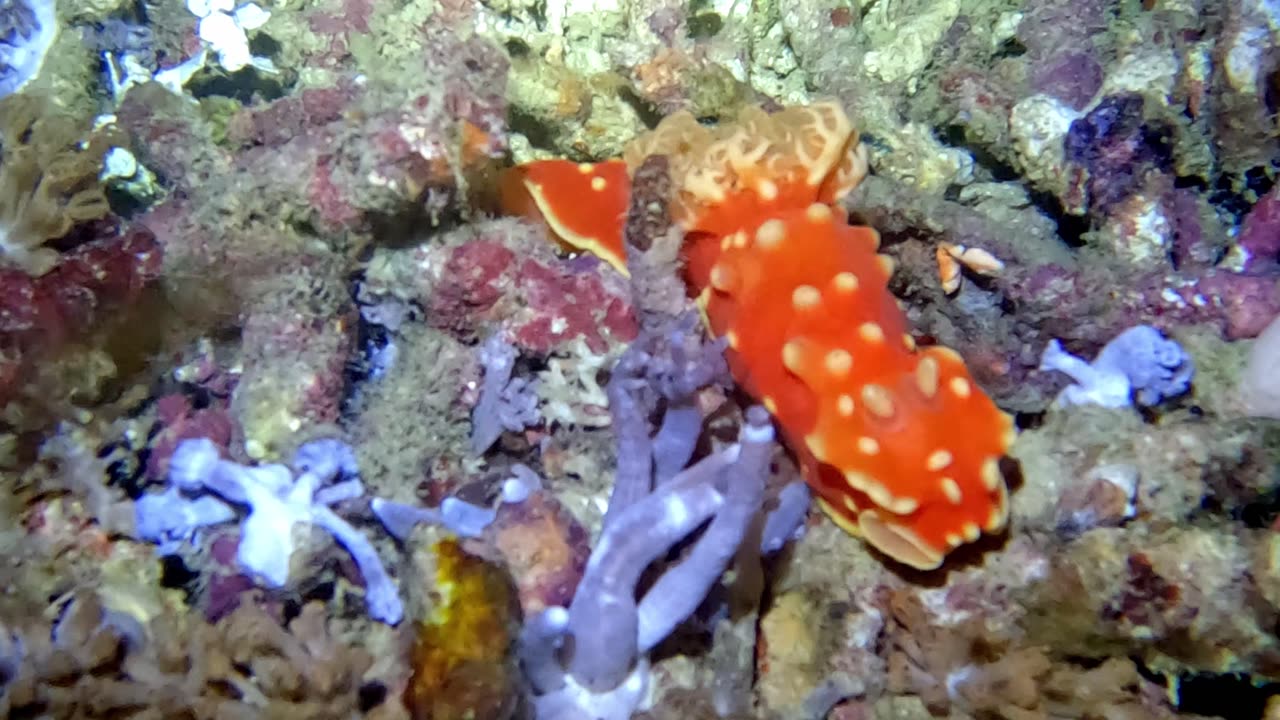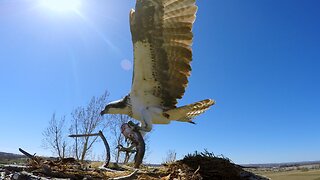Premium Only Content

The beautiful and fascinating strawberry nudibranch
Strawberry nudibranchs, are a species of marine gastropod mollusks. These captivating sea slugs are widely distributed throughout Indo-Pacific coral reefs, where they play a unique role in the marine ecosystem.
Characterized by their vibrant colors and intricate patterns, strawberry nudibranchs are relatively small, measuring around 1 to 2 centimeters in length. Their name is derived from their striking resemblance to strawberries, as their bodies feature shades of red, pink, and orange, often accompanied by white or yellow markings. This vivid coloration serves as a form of camouflage, helping them blend into their coral reef habitats.
The frilly, tassel-like structures on the back of the nudibranch are the gills. These external gills allow them to filter oxygen from the sea water. Nudibranchs are slow moving, can swim or be propelled along either by muscular contraction or by millions of tiny hairs on the bottom of a fleshy "foot". They have a voracious appetite and feed with a rasp like tongue.
Strawberry nudibranchs primarily feed on soft corals. Unlike some other nudibranch species that utilize stinging cells (nematocysts) from their prey for defense, strawberry nudibranchs are known to incorporate these nematocysts into their own tissues. This unique adaptation provides them with a level of protection against potential predators.
These sea slugs have a fascinating reproductive strategy. They are hermaphroditic, meaning each individual possesses both male and female reproductive organs. During mating, two nudibranchs exchange sperm with each other, and later, each one lays a ribbon-like egg mass on the coral substrate. The eggs develop into veliger larvae, eventually settling onto the coral reef and metamorphosing into the adult nudibranch form.
The presence of strawberry nudibranchs in coral reef ecosystems contributes to the overall biodiversity and ecological balance. They play a role in controlling soft coral populations, helping to maintain a healthy coral reef environment.
Scientists continue to study these captivating creatures to better understand their behavior, ecology, and the intricate relationships they have with their surroundings. As coral reefs face numerous threats, including climate change and habitat degradation, the study of species like the strawberry nudibranchs becomes crucial in the conservation efforts aimed at preserving these fragile marine ecosystems.
-
 1:23
1:23
WildCreatures
28 days ago $1.07 earnedOsprey in the nest fight over a catfish meal
2.89K3 -
 2:12:01
2:12:01
I_Came_With_Fire_Podcast
15 hours agoA Brave New Vice: Numb the Conscience, Call it Progress
43.2K13 -
 4:14:29
4:14:29
SynthTrax & DJ Cheezus Livestreams
1 day agoFriday Night Synthwave 80s 90s Electronica and more DJ MIX Livestream Feel The Waves Edition
51.6K2 -
 2:09:19
2:09:19
Side Scrollers Podcast
12 hours agoNerd Duel Tournament of Champions! Who Will Win?!
77.2K6 -
 8:53:50
8:53:50
SpartakusLIVE
14 hours agoNEW Easter Egg, SPECIALIST || Duos w/ @GloryJean followed by quads later!
81.9K2 -
 1:40:06
1:40:06
Glenn Greenwald
13 hours agoAaron Maté and Special Guests on the U.S. Role in Ukraine, Gaza's Future & More | SYSTEM UPDATE #462
177K119 -
 3:49:09
3:49:09
Nerdrotic
17 hours ago $26.71 earnedSuperman's James Gunn Reshoots, Harry Potter DOA! R.I.P. Winds of Winter | Friday Night Tights 356
128K41 -
 2:23:47
2:23:47
DasNello
10 hours agoLADIES AND GENTLEMEN, I PRESENT ELDEN RING NIGHT REIGN!!!
34.7K1 -
 5:35:38
5:35:38
tacetmort3m
10 hours ago🔴 LIVE - LAST STREAM BEFORE DUNE? - NO MORE ROOM IN HELL 2
27.1K -
 1:14:57
1:14:57
Sarah Westall
13 hours agoGame Changing Peptide Increases Immunity 50 to 100x Better than Nutrition Alone w/ Dr. Diane Kazer
47.2K6